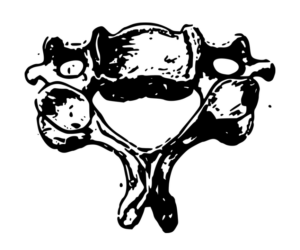by David Rayburn MD, MPH
Scenario:
A crew is dispatched for OB/Childbirth. The baby, delivered as the EMS crew arrives, is pale, limp, and apneic.
What are the next steps of care for this patient? How do we prepare to manage this scenario?
Review:
Delivery of a baby by a prehospital provider is not an infrequent event with approximately 62,000 out-of-hospital births happening each year in the United States. [3] The vast majority of deliveries require only warming and drying of the newborn, but approximately 10% of newborns require some assistance to establish breathing at birth. Of the small overall percentage of pediatric transports in an EMS system, infants less than 1 year make of the majority, which makes this a low frequency, high-stakes scenario for prehospital providers. A pediatric education needs assessment by Hansen et al found neonatal resuscitation to be one of the top three technical or procedural skills needs along with advanced airway and IV/IO access for prehospital providers. Knowing all of these facts, there is limited data from the prehospital setting on the delivery of care for this unique patient population.
A review of Priorities of Care for neonatal resuscitation
In any circumstance, resuscitation is geared towards addressing the inciting event. In adults, this is most often cardiac. In most pediatric patients, respiratory. But neonates are unique in that the inciting event is a failure to transition from fetal circulation to the post-natal circulation, triggered by the decrease in pulmonary vascular resistance brought on by the baby taking its first breath. As such, the focus of neonatal resuscitation, as outlined by the NRP algorithm (See Figure 1 for algorithm adapted to prehospital scope of practice), is rapid assessment of the neonate and initiation of measures to stimulate or assist respirations as soon as possible. The initial measure to resuscitate a blue, limp neonate is drying and stimulation for 30 seconds. If this fails to get the heart rate above 100, ventilations are assisted at a rate of 40-60 breaths per minute. There needs to be thirty seconds of effective ventilations before compressions are initiated for a heart rate < 60. The compression to ventilation ratio is 3:1, in order to enable at least 30 breaths/min to continue during the resuscitation. From a prehospital perspective, providers should consider that there is a “golden 90 seconds” of drying, stimulation and initiation of effective positive pressure ventilation where a tragic situation may be reversed with prioritized action. Importantly, these 90 seconds encompass BLS measures only.

Figure 1: The NRP algorithm adapted to prehospital care (predominantly BLS with exception of epinephrine administration and LMA). As the most common reason for a need to initiate resuscitation in a neonate is a failure to transition from the fetal to the post-natal circulation, initial resuscitation focuses entirely on initiation of ventilation to decrease pulmonary vascular resistance and initiate oxygenation via the lungs. (Image credit: Maia Dorsett)
Because the priorities of care to be fundamentally different for neonates when compared with any other patient population, maintenance of competency is challenging. For most of us who care predominantly for adults with a focus on compressions and minimizing over-ventilation, this algorithm feels foreign and contains no muscle memory. But doing the right thing in the first minute can make the difference between life and death or hypoxic injury, making it paramount that prehospital providers train for this rare, but high stakes scenario.
Unique Challenges
The prehospital environment provides several unique challenges to EMS providers when taking care of neonates including frequency of calls, age-appropriate pediatric equipment availability and the unpredictable nature of the prehospital environment. There is also different anatomy and physiology for neonates compared to older pediatric patients with a higher incidence of hypothermia and hypoglycemia in this age group.
Many of our prehospital providers have limited training regarding pediatrics as well as limited experience with taking care of this patient population. One survey study reported 66% of providers had not received NRP training or that training was >2 years ago. [3] Often NRP is not required for prehospital providers, and often not provided as part of ongoing education within agencies. [1]
Huynh et. al. also found in their simulated patients drying only occurred in 20% of the time and warming only 2% within the first 30 seconds as recommended by NRP. Another finding was that providers bagged at a rate too slow (<40/min) in over 80% of cases, as well as provided too much volume when bagging.
While our providers often have appropriately sized pediatric equipment, this is not always the case for neonatal equipment, and they are often forced to adapt and used the equipment they do have to provide care. This can lead to inadequate or inappropriate care in some circumstances.
Timing provides another challenge in the prehospital environment. If the provider is on scene and delivers the infant, they are able to provide initial NRP care including warming, drying, and providing stimulation as well as providing positive pressure ventilation as necessary. Neonatal Resuscitation Program (NRP) guidelines recommend drying and warming to maintain normothermia as well as initiating bag valve mask within the first minute after delivery. In times where the provider is not on scene when the infant in initially born this puts the providers against the clock before they have even established contact with the patient.
Educational and operational implications
There is a lack of education regarding pediatrics and more specifically neonatal resuscitation among prehospital providers. This is an area that providers note as a deficiency and are interested in receiving more education about. Previous studies have identified skills decay after 6 months, which means this is also a skill that not only needs to be added to prehospital education at baseline but needs to be reassessed at minimum bi-annually. [4] There are multiple avenues of education that are already employed for providers including learning modules, case-based reading, skills stations and even simulation. Enhancing neonatal education or in some cases adding it to the education curriculum would likely be beneficial and improve neonatal patient care.
At the very least, prehospital providers should be providing the basic interventions immediately after delivery of a newborn include warming and drying, which in a small study were shown to be performed infrequently. We know that hypothermia can have severe consequences in this patient population, and delivery in the prehospital environment increases the risk of this. Prehospital providers need to remain vigilant in preventing hypothermia after delivering an infant or responding to a call involving a newborn baby. These concepts should be a focus of education for our prehospital providers. This is likely an area where dispatchers could also have an effect by providing information to individuals over the phone before providers get on scene.
Appropriately sized equipment is important for taking care of pediatric patients and this is even more important when caring for our neonatal population. When drying and stimulating are not sufficient, focusing on providing effective positive pressure ventilation before compressions is essential. For the 10% of neonates born in the out of hospital environment, having an appropriately sized BVM can have dramatic effect on the resuscitation being provided. While prehospital providers are experts at adapting to the situation at hand, they should be provided with all of the necessary tools to take care of all of the patient populations they encounter.
Take Home Points
Pediatrics is a source of great anxiety for prehospital providers and this is only enhanced when their pediatric patient is a newborn. Prehospital providers would likely benefit from more formalized EMS-specific neonatal training as well as EMS equipment that is specific to the neonatal population. To account for the low frequency but high stakes of these resuscitation scenarios as well as changes in clinical practice, planning for spaced repetition of this education is critical.
Case Resolution
Infant was lowered to the level of the placenta and patient was vigorously stimulated for thirty seconds. As the heart rate remained under 100, the EMS provider initiated assisted respirations at a rate of 40-60 seconds. After thirty seconds of assisted respirations, the infant began to have a weak cry and starts to breathe spontaneously. Pt was wrapped in warm blankets including head and was secured for transport. Received blow by oxygen during transport. Color and oxygen saturation improved during transport. Taken to NICU on arrival to Children’s Hospital.
About the author: Dr. Rayburn is currently an EMS Fellow at Indiana University and will complete his training in June 2020. He previously completed Emergency Medicine-Pediatrics residency prior to fellowship training. He currently serves as the deputy medical director for Speedway Fire Department and Wayne Township Fire Department.
EMS MEd Editor, Maia Dorsett, MD, PhD, FAEMS @maiadorsett
References
1. Duby R., Hansen M., Meckler G., Skarica B., Lambert W., Guise JM. Safety Events in high Risk Prehospital Neonatal Calls. Prehospital Emergency Care. 2018; 22(1): 34-40.
2. Hansen M., Meckler G., Dickinson C., Dickenson K., Jui J., Lambert W., Guise JM. Children’s Safety Initiative. A National Assessment of Pediatric Educations Needs among Emergency Medical Services providers. Prehospital Emergency Care. 2014. 19:2, 287-291.
3. Huynh T. When seconds matter: Neonatal Resuscitation in the Prehospital Setting
4. Lammers R., Byrwa M., Fales W., Hale R. Simulation-based Assessment of Paramedic Pediatric Resuscitation Skills. Prehospital Emergency Care. 2009. 13:3, 345-356.
5. Neonatal Resuscitation Program. https://www.aap.org/en-us/continuing-medical-education/life-support/NRP/Pages/NRP.aspx Accessed on January 3, 2020.
6. Robinson S. Pre-Hospital Newborn Resuscitation: The Ten-Minute Dilemma. Journal of Emergency Medical Services. 2019. https://www.jems.com/2019/08/05/the-ten-minute-dilemma/ Accessed on 12/28/19.
7. Su E., Schmidt T., Mann C., Zechnich A. A Randomized Controlled Trial to Assess Decay in Acquired Knowledge among Paramedics Completing a Pediatric Resuscitation Course. Academic Emergency Medicine. 2000. 7(7): 779-786.



